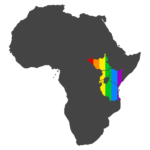Healthy Relationships East Africa

HIV/AIDS is a major contributor to morbidity and mortality in eastern Africa. For example, in Uganda, an estimated 7.3% adults HIV positive. Men who have sex with men (MSM) bear a particularly high disease burden. Despite this increased risk, there is a considerable dearth of scientific literature documenting the barriers and facilitators to behavior change in this vulnerable population. We need to better understand the HIV risk and protective behaviors of MSM and other sexual minority men in Uganda, if we are to develop effective prevention programming.
The almost complete lack of research examining the HIV risk of sexual minority women and transgender people is also problematic. Despite assumptions that sexual minority women are not at risk for HIV, compelling seroprevalence and HIV risk behavior data suggest otherwise. Of the handful of studies that have been published on African transgender people, all but one included these women under the rubric of MSM. Individuals who self-identify as women should not be classified in research as men. Moreover, the lack of research including transgender men in Uganda is concerning, particularly given higher risk behaviors in this group in other countries. This dearth in the literature is not inconsequential.
Given the invisibility of the sexual and gender minority (SGM) populations in eastern Africa fueled by stigma, discrimination, and anti-gay laws, what little is known is largely based upon data collected in capital cities. SGM adults living outside of large cities likely to differ from those living in large cities, including access to services, connection to an SGM community, and access to available sexual partners. A comprehensive survey that includes respondents from across the country can provide greater understanding of the HIV risks facing the SGM population across eastern Africa and, just as importantly, of the opportunities for prevention programming for Ugandan SGM communities. To bridge these identified gaps in the literature, we conducted focus groups to inform the design of a comprehensive heathy sexuality survey for eastern African SGM adults, and then fielded the online survey with ~1,000 people.
Funding Sources:
